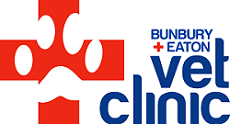
Pet Owner Information
Medial Patellar Luxation (MPL)
What is Medial Patellar Luxation?
Medial patellar luxation (MPL) is a dislocation of the kneecap (patella) toward the inside aspect of the leg. This is a developmental disease that occurs when there is imperfect alignment between the patella and attached quadriceps muscles, and the femur (thigh bone) and tibia (shin bone). This results in the patella sliding out of its normal groove (trochlear groove) during normal weight bearing.
There are several anatomical features that may contribute to development of MPL as well as several anatomical abnormalities that will progress because of an abnormal patella position. These defects include bowing of the femur, abnormal torsion of the femur, a shallow trochlear groove, internal rotation of the tibia and abnormal tibial torsion. The patella may also sit too high or too low relative to the trochlear groove.
1. The patella remains in place unless manually luxated by pressure
These dogs do not show clinical signs (they are subclinical) as normal activity does not result in patellar luxation.
2. The patella spontaneously luxates and reduces during normal activity
These dogs have a characteristic intermittent skipping lameness with periods of non-weight bearing lameness and periods of a completely normal gait.
3. The patella is luxated but may be manually reduced with pressure
These dogs generally have persistent lameness that is characterised by a crouched back leg stance.
4. The patella is permanently luxated and cannot be reduced
These dogs generally have persistent lameness that is characterised by a crouched limb position as for grade 3. They often have visible limb deformities and may have significant exercise intolerance.
MPL Surgical Correction
Surgical correction of MPL is recommended for all dogs with grade 3 or 4 disease and many dogs with grade 2 disease. The type of surgical correction is dependent on the nature and degree of deformity present in each dog which is measured from a preoperative patellar tracking CT (see image inset of preoperative patellar tracking CT scan). In most dogs with grade 2 or 3 disease, a so-called “standard” approach with four main components is performed:
• The trochlear groove is deepened to capture the patella (block recession trochleoplasty)
• The insertion of the patella tendon onto the tibia is moved laterally to align the patella with the trochlear groove (tibial tuberosity transposition)
• The soft tissues on the outside aspect of the leg are tightened (lateral fascial imbrication)
• The soft tissues on the inside aspect of the leg are released (medial desmotomy)
In some cases, CT will identify major alignment abnormalities that will necessitate more involved surgical correction.
Aftercare Requirements
Following surgery most dogs will have a moderate to severe lameness for the first week or so, which should steadily improve in the postoperative period. It is uncommon for dogs to be progressing well in the postoperative period and then suddenly deteriorate. This would be an indication to have your pet reassessed.
Following surgery, all dogs require 10 weeks of strict confinement. During this period dogs must be kept to a walking pace, with all running, jumping and boisterous activity avoided. Dogs should be confined to a part of the house with non-slip flooring and no access to furniture and should be taken outside for toileting purposes 3-4 times daily on lead.
During their recovery, we implement a graduated lead exercise program that is commenced approximately two weeks postoperatively. This involves short, controlled lead walks twice a day which become incrementally longer until the 10-week postoperative assessment. Detailed written aftercare instructions will be provided at the time of surgical discharge outlining this process.
Outcome
The outcome following MPL correction is generally excellent. We expect ~95% of dogs to return to ~95% of their original function following surgery and resolution of any skipping lameness that may have been present.
An important consideration is the development of osteoarthritis. This is the progression of inflammation within a joint and occurs because of any insult to a joint (such as MPL). We cannot reverse pre-existing osteoarthritis or completely halt its progression and, as such, ongoing osteoarthritis management is important following MPL correction.
The main features of this management are maintaining a healthy body condition score, exercise moderation to limit excessive high-impact activity (where possible), and in some cases, medications such as non-steroidal anti-inflammatory drugs.
Complications
MPL correction is a reliable surgical procedure with excellent outcomes in most cases. Despite this, no surgery is completely without complication, and it is important to understand some of the main potential risks of MPL correction surgery:
• Re-luxation of the patella is reported in ~5% of cases and would generally present as recurrent skipping lameness or crouched stance, depending on the grade of recurrent MPL. Additional surgery may be indicated in these cases and can be determined on a case-by-case basis.
• Infection is reported in ~5% of cases and can result in swelling, lameness, pain and discharge from the surgery site. Infection can be resistant to medical therapy whilst bone pins are still present and most cases will require implant (pin) removal once the bone has healed. Removal of these pins can be performed with a very minor surgical procedure at the time of follow-up radiographs in most cases.
• Implant irritation of the soft tissues is possible in the absence of infection. This will generally present similar to infection with swelling and pain in the region of the pins. Pin removal at the time of follow-up radiographs can be performed if this is encountered.
• Implant failure or bone fracture are very rarely reported following surgery; however, would represent a significant complication that would require additional investigation and surgery.
If you are concerned about the way your pet is progressing following MPL correction, please contact us and we can organise a recheck appointment at your convenience.
